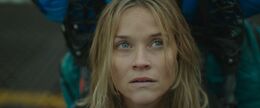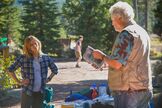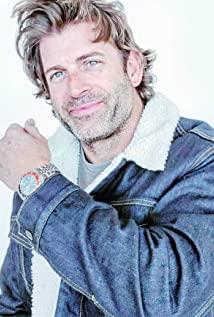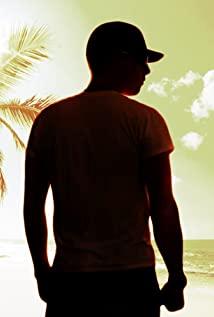The story told in the film couldn't be simpler: another man who has lost hope in life. There is no worst, only worse. I haven't experienced divorce, but I don't have to think about losing my most beloved relative. If it happened to me, it would be difficult to survive. Of course, no one can understand the pain of the parties involved. Sartre has a good saying: "Others are hell", and there is still an ultimate irreconcilable contradiction between people. To a certain extent, no one watching this movie can understand the heroine's heart. A painful and insurmountable hurdle of hardship. The heroine intends to try to forge herself with a new exercise, so she decides to take a Pacific Ocean hike. From the southernmost desert to the northernmost forest in America. Pain follows you along the way: poisonous snakes, scorching sun, hunger, fear. The various tortures from the flesh and the harsh nature are simply the outward projection of her inner suffering. When the heroine meets a same-sex traveler at the rest stop, I always subconsciously hope that she can travel with this companion, but the road of life is not only a one-way street, and there is no room for the existence of a second person, only myself Going down alone has nothing to do with others in the end. Therefore, in the countless next journeys in the movie, all you see are her alone on the road in the camera. Because she doesn't need another person, her pain is like the luggage she carries, full of all kinds of things that professional travelers don't need: a few thick books, all kinds of daily necessities, and no one can truly experience herself heavy burden.
The movie tells a true story, and the truth is often very cruel and unforgiving. In reality, how many people have walked out of the mazes and dilemmas that life has laid out for us intentionally or unintentionally? As I write this, I am reminded of the news of a woman in Beijing who jumped off the Guomao Bridge and committed suicide. I remember staring at that photo for a long time: a white down jacket, one shoe had fallen off, lying beside her body, a woman with short short hair, face down, and one hand on her chest. The background is a gray-black asphalt surface rubbed by the tires of passing vehicles, cold and lifeless. Her luggage was left on the bridge, gleaming strangely in the sun. The difference is that the heroine in the movie carried it for thousands of kilometers to find the meaning of life, while the woman in white finally chose to give up.
It's really hard to live. Not everyone can embark on a journey of their own without worrying like the heroine in the film. Too many people choose to give up rather than keep going.
View more about Wild reviews











